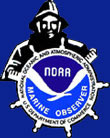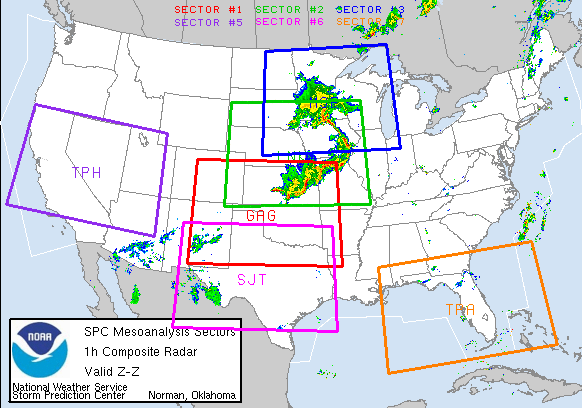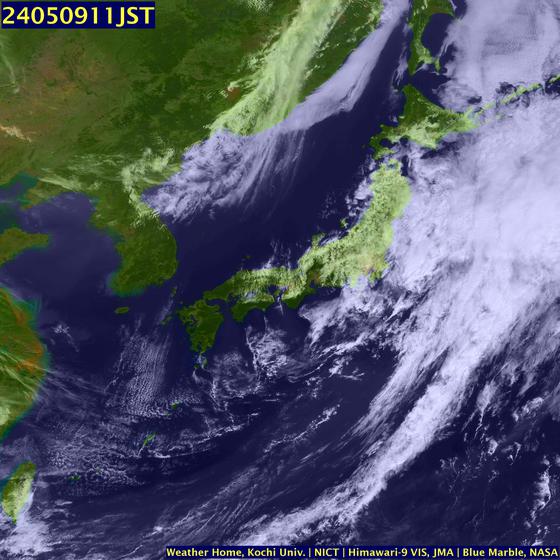 The QuikScat Weather Satellite is reported to be running into problems and could fail at any moment. This would indeed have a major impact on reporting hurricanes, as recently reported by the Associated Press.
The QuikScat Weather Satellite is reported to be running into problems and could fail at any moment. This would indeed have a major impact on reporting hurricanes, as recently reported by the Associated Press.History
NASA's Quick Scatterometer (QuikSCAT) was lofted into space at 7:15 p.m. Pacific Daylight Time on Saturday, June 19, 1999 atop a U.S. Air Force Titan II launch vehicle from Space Launch Complex 4 West at California's Vandenberg Air Force Base. The satellite was launched in a south-southwesterly direction, soaring over the Pacific Ocean at sunset as it ascended into space to achieve an initial elliptical orbit with a maximum altitude of about 800 kilometers (500 miles) above Earth's surface.
Built in a record time of just 12 months, QuikScat provides climatologists, meteorologists and oceanographers with daily, detailed snapshots of the winds swirling above the world's oceans. Labeled as NASA's next "El Niño watcher," QuikSCAT is used to better understand global weather abnormalities and to generally improve weather forecasting.
QuikSCAT's predecessor, NSCAT (NASA Scatterometer), a microwave radar scatterometer, measured near-surface wind vectors (both speed and direction) over the global oceans starting in August 1996. The QuikSCAT mission is a "quick recovery" mission to fill the gap created by the loss of data from NSCAT, after the satellite it was flying on lost power in June 1997.
Winds play a major role in every aspect of weather on Earth. They directly affect the turbulent exchanges of heat, moisture and greenhouse gases between Earth's atmosphere and the ocean. To better understand their impact on oceans and improve weather forecasting, QuikSCAT carries a state-of-the-art radar instrument called a scatterometer for a two-year science mission. Known as "SeaWinds," this scatterometer operates by transmitting high-frequency microwave pulses to the ocean surface and measuring the "backscattered" or echoed radar pulses bounced back to the satellite. The instrument senses ripples caused by winds near the ocean's surface, from which scientists can compute the winds' speed and direction. The instruments can acquire hundreds of times more observations of surface wind velocity each day than can ships and buoys, and are the only remote-sensing systems able to provide continuous, accurate and high-resolution measurements of both wind speeds and direction regardless of weather conditions.
SeaWinds uses a rotating dish antenna with two spot beams that sweep in a circular pattern. The antenna radiates microwave pulses at a frequency of 13.4 gigahertz across broad regions on Earth's surface. The instrument is currently collecting data over ocean, land, and ice in a continuous, 1,800-kilometer-wide band, making approximately 400,000 measurements and covering 90% of Earth's surface each day.
The ProblemLast year, the satellite suffered a major set back with the failure of a primary transmitter used to send data to Earth about every 90 minutes. It appears that there was a software glitch that seems to happen more than NASA likes. Now QuikScat is operating on back up transmitters that could last for years or fail without warning. With the only back up being a European satellite with similar technology but with limited capabilities. There would be about a 16% loss of information. However, forecasters will still be able to predict a hurricane and its path, but it could mean evacuations over a wider area than the hurricane center normally orders when it has more precise forecasts.
But the problem does not end there. NASA is having it's semi monthly budget fights and of course we can't forget the never ending internal battles for a new design. Maybe by 2012 we will get a new bird. Maybe? Either that or if QuikScat fails like NSCAT failed and the next Cat 5 takes out another major city, we will have another satellite just as quick as we got QuikScat in the first place.
RS


































































































![Validate my RSS feed [Valid RSS]](valid-rss.png)
No comments:
Post a Comment